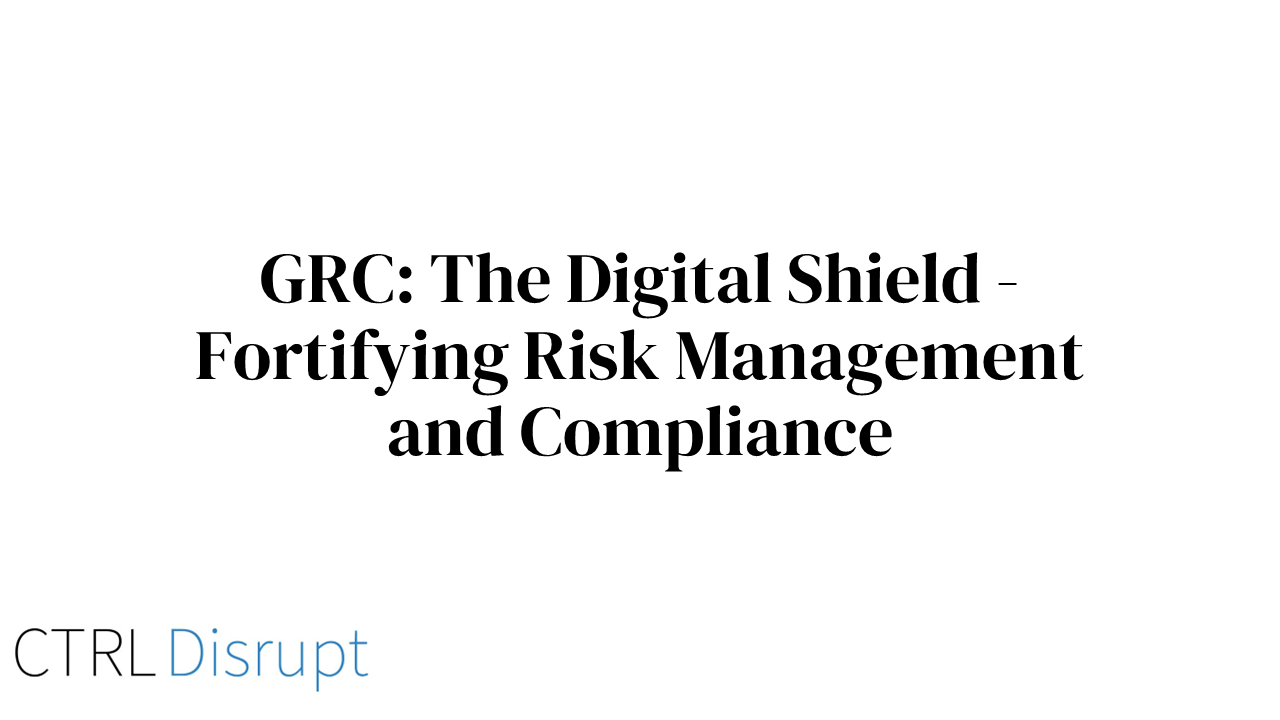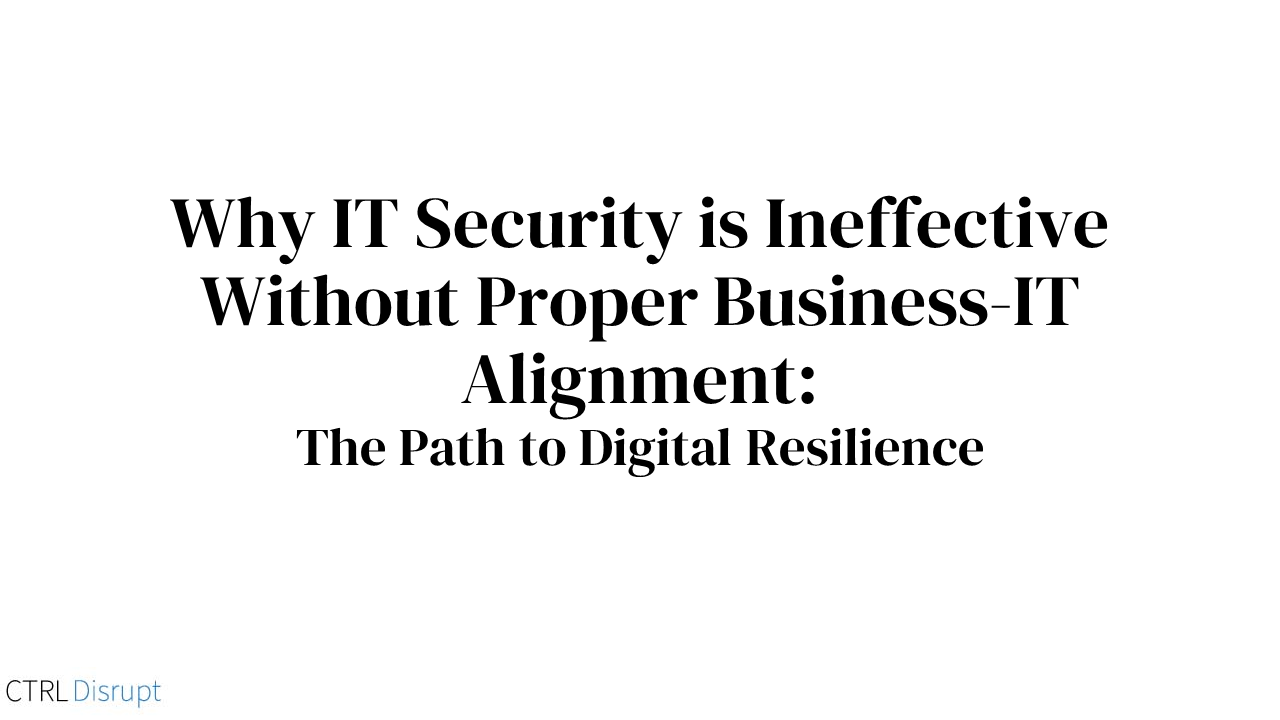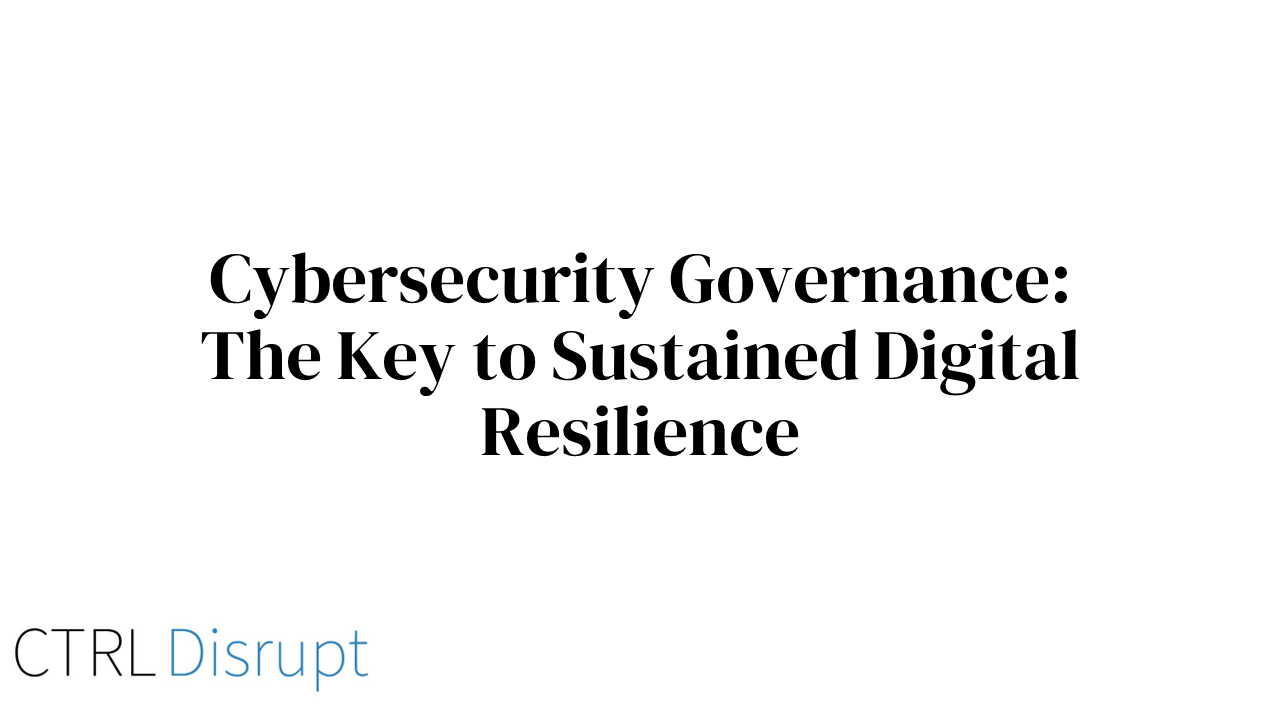Aligning GRC with Digital Strategies for Enhanced Enterprise Resilience
Introduction to Enterprise Digital Strategies
In an era marked by rapid technological advances and shifting market dynamics, enterprise digital strategies have become the cornerstone of business success. These strategies, encompassing everything from data analytics to customer engagement platforms, are integral in driving growth, enhancing operational efficiency, and maintaining competitive advantage. However, the integration of such advanced digital solutions also brings forth a spectrum of challenges and risks, emphasizing the need for robust governance, risk management, and compliance (GRC) alignment.
The absence of proper GRC alignment in digital strategies can lead to various pitfalls. Without structured governance, digital initiatives might misalign with overall business objectives, leading to resource wastage and strategic misdirection. Unchecked digital risk exposures can open the door to data breaches, operational disruptions, and regulatory non-compliance, each carrying significant financial and reputational consequences. Thus, the intricate task at hand for modern enterprises is not just to adopt digital strategies but to align them closely with effective GRC principles.
As we delve deeper into this topic, we will explore the symbiotic relationship between digital strategies and GRC, the role of GRC in enhancing digital resilience, and practical steps for achieving this alignment to secure a prosperous and resilient digital future for businesses.
GRC Alignment with Digital Strategies
In today’s business landscape, the alignment of Governance, Risk Management, and Compliance (GRC) with digital strategies has transcended from being a best practice to a critical necessity. This alignment is the linchpin that ensures a company’s digital initiatives are not only innovative but also grounded in security, compliance, and risk awareness.
Integrating GRC into digital planning is a nuanced process that involves weaving GRC considerations into the fabric of digital strategy from the outset. When a business embarks on a new digital project or initiative, it must assess the potential risks, governance implications, and compliance requirements right from the planning phase. This approach ensures that digital strategies are crafted with a full understanding of the regulatory landscape and potential risk factors, enabling more informed decision-making and fostering strategic agility.
A key challenge in aligning GRC with digital strategies lies in balancing the drive for innovation with the necessity of risk management. Innovation is the engine that propels businesses forward, ensuring competitive advantage and market relevance. However, uncontrolled innovation without a corresponding focus on risk management can lead to vulnerabilities and potential setbacks. An effective GRC-aligned strategy ensures that while businesses pursue cutting-edge digital innovation, they remain vigilant about potential risks and compliance obligations. It creates a business culture where risk awareness coexists with innovation, allowing companies to pursue ambitious digital goals confidently and responsibly.
Ultimately, the alignment of GRC with digital strategies is not merely a defensive tactic against risks; it is an enabler for businesses to pursue their digital aspirations in a confident and responsible manner. By embedding GRC into the core of digital strategy development, enterprises can ensure that their digital ventures are dynamic, secure, and conducive to sustainable growth in an increasingly digital-centric business environment.
Enhancing Digital Resilience through GRC
In the rapidly evolving digital landscape, where new technologies and cyber threats emerge continuously, enhancing digital resilience has become imperative for businesses. Digital resilience is the ability of an organization to maintain, adapt, and recover its operations amidst various digital challenges. The integration of Governance, Risk Management, and Compliance (GRC) plays a crucial role in strengthening this resilience.
GRC frameworks contribute significantly to building a resilient digital strategy. They provide a structured approach to understanding and managing the risks associated with digital operations. By aligning GRC with digital strategies, organizations can ensure that they are not only compliant with necessary regulations but are also prepared to face potential digital disruptions. This preparation involves identifying risks early, assessing their potential impact, and implementing effective controls to mitigate them.
Risk assessment and management are key components of this process. They involve systematically evaluating digital initiatives to identify vulnerabilities and threats, and then taking steps to reduce these risks to an acceptable level. This process is continuous and adaptive, allowing businesses to respond to new risks as they arise.
Moreover, a well-integrated GRC strategy ensures that all aspects of digital operations, from data protection to IT governance, are aligned with the organization's overall objectives. This alignment helps in creating a cohesive and agile response to any digital adversity, thereby minimizing downtime and ensuring business continuity.
In essence, the synergy between digital strategies and GRC is a cornerstone for building digital resilience. It allows businesses to navigate the complex digital environment confidently, armed with the knowledge that their operations are secure, compliant, and prepared to adapt to change. By enhancing digital resilience through GRC, organizations can not only protect their current operations but also lay a strong foundation for future growth and innovation in the digital realm.
Steps to Align GRC with Digital Strategies
Integrating Governance, Risk Management, and Compliance (GRC) with digital strategies is pivotal for businesses navigating the complex digital landscape. Leveraging best practices such as COBIT and the Strategic Alignment Model, organizations can effectively bridge their GRC and digital initiatives. Here’s how these frameworks and models can be integrated into the alignment process:
-
Adopt a Structured Framework like COBIT
COBIT (Control Objectives for Information and Related Technologies) provides a comprehensive framework for IT management and governance. By adopting COBIT, organizations can align their IT processes with their business goals, ensuring that digital strategies are not only efficient but also compliant and secure. COBIT’s framework encompasses various aspects of IT governance that are crucial for effective digital strategy alignment, including risk management and resource optimization. -
Utilize the Strategic Alignment Model
This model emphasizes the alignment of business and IT strategies. By applying this model, businesses can ensure that their digital strategies are fully aligned with their broader business objectives. The Strategic Alignment Model encourages a holistic view of business and IT objectives, facilitating seamless integration and alignment. -
Conduct Comprehensive GRC and Digital Strategy Assessments
Regularly assess both digital strategies and GRC practices to identify alignment opportunities and gaps. This assessment should include a thorough analysis of how digital initiatives align with overall business goals and GRC requirements. -
Embed GRC into the Digital Project Lifecycle
Implement GRC considerations at every stage of the digital project lifecycle. This involves incorporating risk assessments and compliance checks as standard procedures. The COBIT framework can be particularly useful in defining these processes and ensuring that they are consistent across all digital projects. -
Leverage Technology for Effective Alignment
Use GRC technology platforms that are compatible with COBIT principles. These tools can automate and streamline risk management and compliance monitoring, making it easier to align and coordinate GRC activities with digital initiatives. -
Promote a Culture of Integrated Thinking
Foster a culture where GRC awareness is integral to digital strategy development. Training digital teams on the Strategic Alignment Model and COBIT principles can empower them to proactively consider GRC in their decision-making processes. -
Regular Reviews and Updates
The dynamic nature of digital technologies and the evolving regulatory environment necessitate regular reviews of the GRC-digital alignment. Update strategies to reflect new technologies, emerging risks, and regulatory changes, using COBIT and the Strategic Alignment Model as guides for continuous improvement.
By integrating these best practices into their GRC alignment process, businesses can create a more robust, agile, and compliant digital environment. This strategic harmony between GRC and digital initiatives is essential for navigating the complexities of today's business landscape and securing long-term success.
Conclusion
The Benefits of a GRC-Aligned Digital Strategy for Long-term Resilience
In concluding our exploration of aligning GRC with digital strategies, it becomes clear that this integration is not just beneficial but essential for sustainable enterprise resilience in the digital age. A GRC-aligned digital strategy ensures that organizations are not only technologically advanced but also secure, compliant, and resilient to the myriad risks that characterize today's digital landscape.
The use of frameworks such as COBIT and the Strategic Alignment Model in harmonizing GRC with digital strategies offers a structured approach to this integration. It enables businesses to navigate digital transformations confidently while adhering to necessary governance and compliance standards. This strategic alignment leads to enhanced decision-making, optimized risk management, and a robust posture against digital threats.
A Call to Action for Businesses to Review and Realign Their GRC and Digital Strategies
As we look ahead, the call to action for businesses is clear: to review and realign their GRC and digital strategies. In an environment marked by rapid technological advancements and evolving regulatory demands, continuous alignment is crucial. Businesses must take proactive steps to ensure that their digital strategies are not only driving innovation and growth but are also underpinned by strong governance, comprehensive risk management, and unwavering compliance.
This ongoing alignment process is vital for businesses seeking to thrive in the digital era. It is a strategic imperative that fosters resilience, ensures sustainability, and positions enterprises to capitalize on the opportunities presented by the digital revolution. By prioritizing the alignment of GRC with digital strategies, businesses can secure a future where innovation is balanced with risk awareness, and digital advancement goes hand in hand with operational integrity.

 By
By


